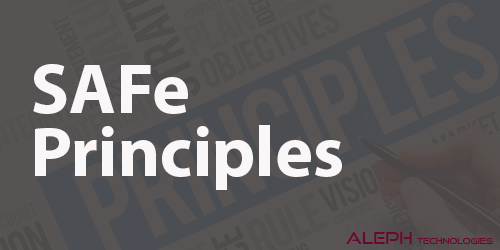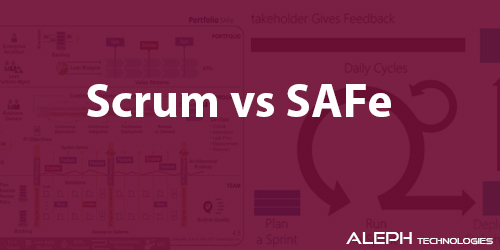Understanding Scaled Agile (SAFe) and Disciplined Agile Delivery (DAD)
Agile methodologies have revolutionized software development by promoting flexibility, collaboration, and iterative delivery. Two prominent frameworks in Agile development are the Scaled Agile Framework (SAFe) and Disciplined Agile Delivery (DAD), each with its own approach and benefits.
Scaled Agile Framework (SAFe):
SAFe, developed by methodologist Dean Leffingwell, combines lean and agile principles into a framework tailored for large-scale projects. It encompasses Team, Program, and Portfolio processes, offering a structured approach at different organizational levels.
Team Level: SAFe adopts scrum methodologies with 14-day sprint cycles, emphasizing collaboration and iterative development within teams.
Program Level: Extending scrum concepts, SAFe introduces Release Trains composed of five sprint cycles plus an additional planning sprint for optimization and adaptation. Defined roles and processes ensure consistency and collaboration across the project.
Portfolio Level: SAFe leverages lean principles at the Portfolio level, facilitating executive decision-making by prioritizing features and initiatives based on value streams and Program-level planning.
Disciplined Agile Delivery (DAD):
Developed by Scott Ambler and Mark Lines, DAD complements existing agile frameworks by addressing areas often overlooked in smaller-scale agile approaches. It recommends three phases: Inception, Construction, and Transition, providing guidance throughout the project lifecycle.
Inception: DAD emphasizes early planning and architecture design to set the project's direction and foundation.
Construction: Similar to agile methodologies, DAD focuses on iterative development and collaboration to deliver working software incrementally.
Transition: DAD emphasizes DevOps practices and integration for smooth deployment and delivery of the final product.
Pros and Cons:
SAFe Pros: Provides a structured framework suitable for transitioning from traditional environments to agile practices, emphasizes collaboration and alignment across teams and levels, and incorporates agile principles of inspection and adaptation.
SAFe Cons: Some critics find SAFe too prescriptive, limiting flexibility and creativity in process decisions. The upfront planning and top-down approach may not align with the core values of agility for all organizations.
DAD Pros: Offers guidance throughout the project lifecycle, including early planning and DevOps integration, flexible lifecycle options for different project needs, and a focus on architecture and design.
DAD Cons: Requires a deep understanding of agile principles and may be perceived as complex for teams unfamiliar with agile methodologies. The flexibility may lead to inconsistency if not implemented effectively.
Conclusion:
Choosing between SAFe and DAD depends on the organization's size, structure, agility maturity, and project requirements. SAFe provides a structured path for large-scale agile adoption, while DAD offers flexibility and guidance throughout the project lifecycle. Understanding the nuances of each framework enables organizations to align their agile practices with their strategic goals and development needs. Learn more about SAFe:
Related posts
-

Understanding SAFe Principles: A Comprehensive Guide 🚀
Mar 25, 2024 -

Scrum vs SAFe: Unveiling the Differences 🔄
Mar 25, 2024 -

Unlocking Business Agility with SAFe: A Comprehensive Guide 🚀
Mar 25, 2024 -

Why Release Management Matters in Agile Projects 🚀
Mar 25, 2024

Please login to check comments